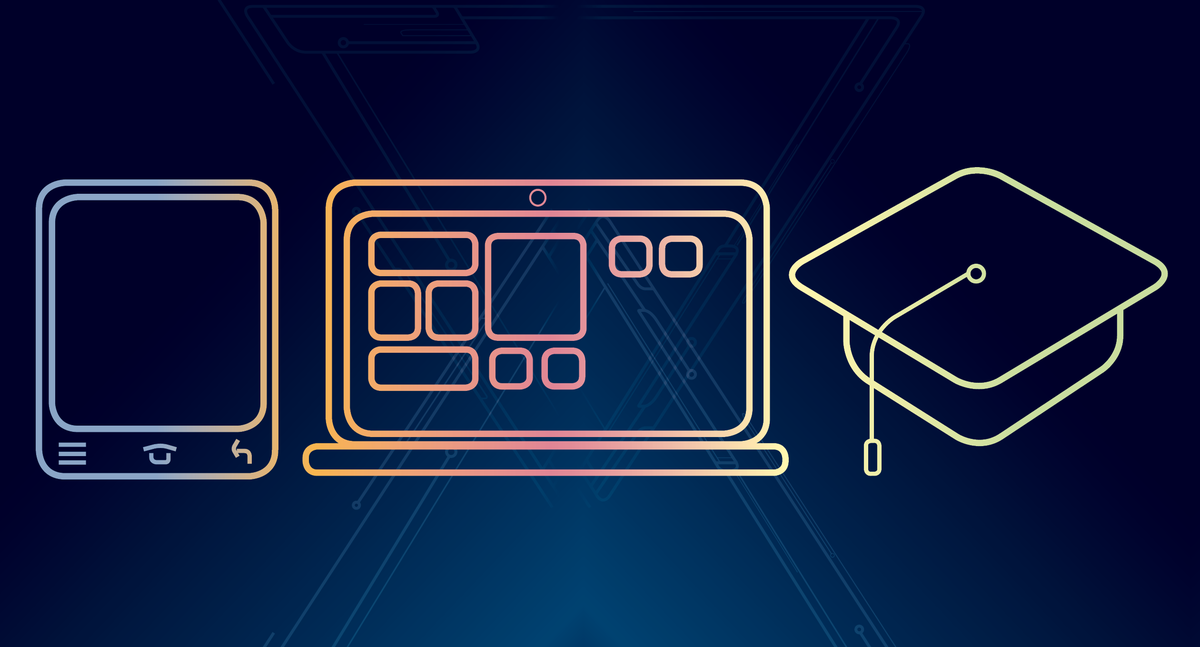Technology is a powerful thing. Sure, it can be argued that we’ve gotten along just fine without smartphones, tablets and laptops, but that’s missing the point. Technology does a lot to create opportunities, equalize the playing field, and generally make doing business a much smoother, effective endeavor. Technology has changed a lot of how we work, as well as how we learn.
Everyone has a laptop or a desktop at work—it’s as much a fixture of the modern office as the water cooler or coffee machine. This hasn’t changed in decades, but how we use the hardware has. Plain to see is how our personal devices have freed us from the shackles of office hardware. Phones, hybrids and tablets all allow us to communicate with colleagues, reply to emails and even send files, regardless of location or time. This flexibility to conduct business at any time is a double-edged sword. It allows for the agility to react whenever, wherever, but also lets work encroach on what is meant to be personal time. It lies to the user to find the right balance, but at least the opportunity is there.

Of late, even how we use the technology that has been around forever has changed. As everything moves to the cloud, we are given even more opportunity to work remotely. Your work files can now be anywhere there is an internet connection. The “sorry, I left the files at home” excuse is no longer valid. The increasing integration of cloud services such as Google Drive, and iCloud also mean everything, be it work, or personal files, can be found in one convenient place. Necessary phone storage drops, and phone prices are now free to do the same. This also means that losing files is a far less likely occurrence. Cloud storage facilities are secure, redundant, and virtually everlasting. You won’t have to worry about theft, loss, or even natural disasters. Once it’s on a reputable cloud provider’s servers, you’re golden.
There are other, farther-reaching ramifications to cloud services. Once, only companies that could handle the CapEx had the hardware to build servers, and create software to handle specific I.T. needs. Now, a quick, extremely affordable service, such as Amazon’s cloud services, allows the smallest businesses to tap hardware and software instantly, scale it to meet demand, and then shut it down, as their needs dictate, all on a subscription basis. This levels the playing field tremendously, letting even smaller businesses roll with the big boys who have server farms, and large I.T. departments. If you’re a small business, looking for a way to compete with larger players and their huge I.T. budgets, take a look at some of the cloud services available to you, and reap the benefits of taking the leap into the next logical progression of your business IT.
Education is another realm where technology is making a huge impact. Consumer technology such as tablets and projectors are just the start of it. Advancements such as augmented reality make teaching and learning all that more pleasant, better engaging students, and letting them better absorb the information being presented them.

From simple overhead projectors, to today’s HDMI-enabled LCD projectors, technology has made an impact in the way people learn, and there is even more on the horizon. From virtual reality fieldtrips thanks to low-cost technology such as Google Cardboard, to remote learning opportunities that allow children in far-flung barrios to interact with students from the city, or travel to new, otherwise inaccessible places, technology constantly breaks boundaries that keep us from seeing, experiencing, and learning from the rest of the world.
Through technology, teachers will be able to reach students across the globe, opening their eyes to a world that they would otherwise have not been able to even imagine. Broader views, wider reaches, and shared opinions mean borders will matter less, and once inquiring minds come together, the potential is immeasurable. Right here, in the Philippines, we have software such as the Mind Museum app that any user can install right onto their smartphone or tablet. Through it, teachers have access to experiments that show scientific concepts to students of all learning levels, with detailed instructions and explanations to help them better get the lesson across. Students can also take virtual tours of the museum, and experience being there remotely, without having to spend time and resources traveling to the museum itself.
Technology is a wonderful thing, but it’s not just a means to watch cat videos and play games. It’s a real agent for change, if used properly. There’s so much that can be done with technology, we just need to learn how to leverage it.
Also published in GADGETS MAGAZINE July 2016 issue
Words by Ren Alcantara
Artwork by Theresa Eloriaga
